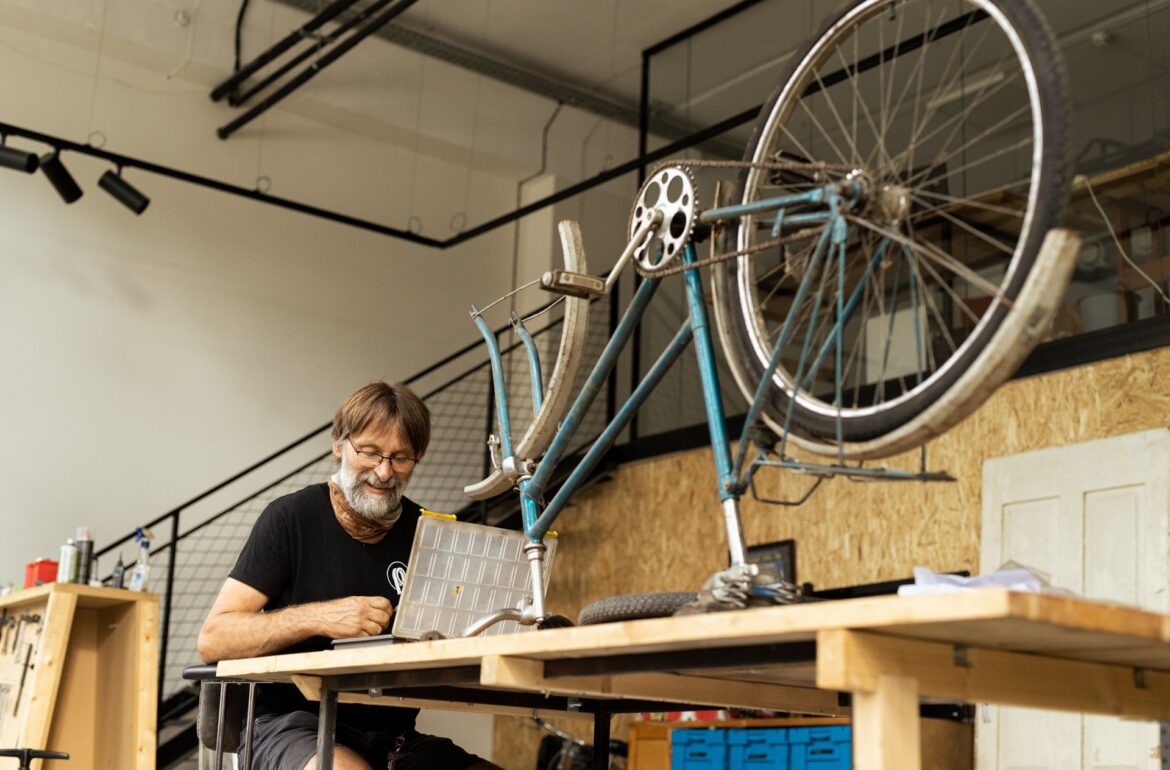Even though Estonia is taking important steps towards embracing the circular economy, a process led by small and medium-sized enterprises, a recent study by TalTech researchers sheds light on both the successes and the challenges and obstacles along the way.
Estonia is taking significant steps toward embracing the concept of a circular economy (CE), with small and medium-sized enterprises (SMEs) leading the way. The transition towards a CE is seen as essential for sustainability, challenging the traditional linear growth model. A recent study sheds light on Estonia’s progress in this regard, revealing both the enthusiasm of its SMEs and the challenges they face.
The CE is a holistic economic approach that aims to reduce resource extraction, minimise waste, and extend the lifespan of materials and products. It is viewed as a win-win solution for businesses, the economy, and the environment, emphasising the importance of reusing, recycling, and remanufacturing. However, despite growing awareness of its benefits and government initiatives, the adoption of CE practices remains in its early stages in Estonia.
In a study conducted jointly by the Sustainable Value Chain Management Unit, led by Prof. Wolfgang Gerstlberger from the Department of Business Administration, the question of how Estonian companies are undertaking technical innovations for circular practices and the differences across industries was explored. The study utilised a mixed-method research approach, combining qualitative group interviews (12 participants) and a quantitative survey (190 SMEs) to provide comprehensive insights into the barriers and opportunities for innovation in CE practices.
Challenges and motivations
The study found that Estonian SMEs are engaging in innovation for circular practices at different phases of the product life cycle. Notably, the highest participation was observed in the product design phase, with the least involvement occurring in the material and end-of-life phases.
The primary motivations for implementing innovation for circular practices among these SMEs were identified as customer demand and efficiency improvements. As customers become more informed and environmentally conscious, businesses are motivated to offer cleaner and more sustainable choices. Additionally, policies and strategies, such as the European Union’s Ecodesign Directive, encourage companies to develop more resource-efficient products.
However, several factors were identified as hindrances to innovation for CE. Financial constraints were a significant challenge, as SMEs often struggle with the costs associated with implementing circular practices. Furthermore, a lack of knowledge and potential collaboration partners, as well as issues related to company strategies, were also identified as barriers.
Industry-specific insights
The study also highlighted industry-specific differences in the implementation of innovation. In the computer industry, innovation was primarily focused on the use and design phases, while the electric industry saw substantial innovation in the design and production phases. Meanwhile, the chemical industry and metal industry were more involved in the production and distribution and use phases, with varying levels of innovation in other phases.
Recommendations
To accelerate the transition of Estonian SMEs toward a circular economy, policymakers are encouraged to develop and strengthen policy frameworks, provide diverse support mechanisms, and establish implementation support programmes. Educating end consumers about the benefits of CE practices and sustainable products is also essential to generate support for CE-oriented businesses.
In conclusion, Estonia’s SMEs are making strides towards embracing innovation for a circular economy, but challenges remain. With the right support and incentives, these businesses can play a pivotal role in creating a sustainable and circular future for Estonia’s economy and environment.
For a more in-depth exploration of this study, those interested can refer to the academic publication authored by Tarlan Ahmadov, PhD researcher at TalTech.
Ahmadov, T. (2023). Innovation for Circular Economy: Overview of Estonian Enterprises’ Transition Journey. In Muhammed Veysel Kaya (Ed.), Social and Economic Studies within the Framework of Emerging Global Developments (3rd ed., pp. 103–116). Peter Lang. https://doi.org/10.3726/b20968
References
1 European Topic Centre Waste and Materials in a Green Economy (2021), Business Models in a Circular Economy, https://www.eionet.europa.eu/etcs/etc-wmge/products/business-modelsin-a-circular-economy
Written by Tarlan Ahmadov & Wolfgang Gerstlberger, Sustainable Value Chain Management Unit, Tallinn University of Technology. This article was originally published on the Tallinn University of Technology webpage.
 Back
Back



